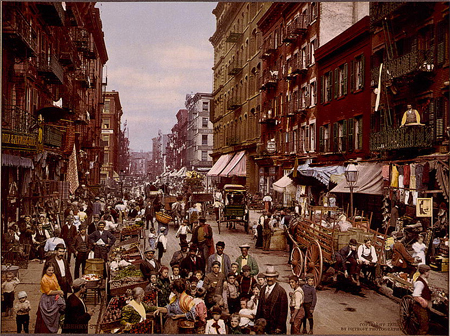Literature Links: And to Think That I Saw It on Mulberry Street
Theodor Geisel—a.k.a. Dr. Seuss—was born in 1904 in Springfield, Massachusetts. And to Think That I Saw It on Mulberry Street was the first of many children’s books that he wrote and illustrated. Geisel supposedly received 27 rejections before the book was published by Vanguard Press in 1937 thanks, as the story goes, to a chance run-in with and old friend from Darthmouth College. After reading the book, engage your students with some of the following primary source activities. Have your students investigate photos of Springfield to see what Dr. Suess’ hometown looked like when he was growing up; consider using the modified primary source analysis tool suggested by Chicago Public Schools teacher Barbara Evans.
- Main Street, Springfield, Mass. c 1905
- Main Street, Springfield, Mass. c 1908
- Massasoit House and R.R. Arch, Springfield, Mass. c 1908
- Emerson Wight Playground Springfield, Massachusetts 1916 June 27
After investigating the historical images of Springfield, have students use Google Maps or Google Earth to see what these spots look like today.
- 1598 Main Street Springfield, Mass.
- 1576 Main Street Springfield, Mass.
- 1697 Main Street Springfield, Mass.
- Emerson Wight Park Springfield, Mass.
Theodor Geisel reportedly lived on Howard St. and Fairfield St. in Springfield. He mentions another street in the book in addition to Mulberry Street. Can your students find these streets on a historic and current-day map of Springfield? In the book, Dr. Seuss describes an intersection. Can you find that intersection on either map?
- View of Springfield, Mass. 1875
- Springfield, Mass. today
Theodor Geisel’s career as an illustrator took off when he moved to New York City, where there is also a Mulberry Street. What do your students see in these pictures of Mulberry Street, New York City, around the turn of the 20th century (1900-1910)? What similarities and differences do they find between Mulberry Street, New York City and Mulberry Street, Springfield, Massachusetts?
- Italian neighborhood with street market, Mulberry Street, New York
- Italian neighborhood with street market, Mulberry Street, New York
- Italian neighborhood with street market, Mulberry Street, New York
- Mulberry Street, New York City
- Italian neighborhood, Mulberry Street, New York
- Italian market, Mulberry Street, New York
After analyzing the photos, you might have your students try to describe what they see using the book’s four-line rhyme pattern: a, b, c, b. (To challenge older or advanced students, have them match the typical syllable structure as well: 6, 5, 6, 5.)
Look at a contemporary map of Mulberry Street, New York City. What kind of markets and stores do you find today?
The Teaching with the Library of Congress blog has another idea for using the Mulberry Street image and other primary sources like it: Hide and Seek On Mulberry Street with the Library of Congress.
What other primary sources might you use with this book or other Dr. Seuss stories?
Related primary source lesson – How Transportation Transformed America: Going to Market

